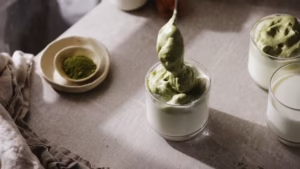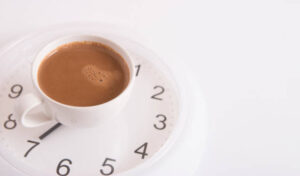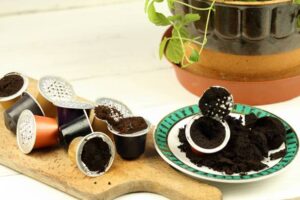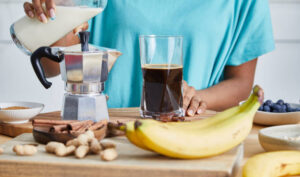Brewing coffee is both a science and an art. While the smell of freshly brewed coffee is enough to lift your mood, the taste and quality depend heavily on the method you use to prepare it. From pour-over techniques to using French presses and espresso machines, each brewing method offers a distinct flavor and aroma. Whether you’re a seasoned barista or just starting your coffee journey, understanding the top brewing methods can elevate your coffee game to a professional level.
Table of Contents
In this guide, we’ll explore various brewing techniques, their unique characteristics, and how you can master each one to brew coffee like a pro. Let’s dive into the world of coffee and uncover the secrets to making a perfect cup every time.
Understanding the Basics of Coffee Brewing
Before diving into specific methods, it’s important to understand the fundamentals of coffee brewing. Every method relies on the same basic elements: coffee grounds, water, time, temperature, and equipment. The grind size of the beans, water temperature, and brewing time all significantly affect the flavor profile.
Freshly ground coffee beans offer a more flavorful and aromatic brew compared to pre-ground coffee. Ideally, water should be heated to around 195°F to 205°F. Going above or below this range can result in under-extracted or over-extracted coffee, leading to sour or bitter notes.
Choosing the right grind size for your brewing method is also crucial. For instance, espresso requires a fine grind, while French press works best with a coarse grind. These small adjustments make a big difference in achieving barista-level coffee at home.
Pour-Over Method: A Classic Favorite
Pour-over brewing is one of the most popular manual brewing techniques, especially favored by specialty coffee enthusiasts. It allows for precise control over brewing time and water distribution, which results in a clean, bright cup of coffee.
To master the pour-over method, start by using a gooseneck kettle for controlled pouring. A medium-fine grind works best here. Place a paper filter in a dripper (such as a Hario V60 or Chemex), rinse it with hot water, and discard the rinse water. Add freshly ground coffee and pour a small amount of hot water to let the coffee “bloom” for 30 seconds. Then, slowly pour the remaining water in a circular motion.
This method highlights subtle flavors and is ideal for single-origin beans. With practice, you’ll be able to fine-tune the taste by adjusting grind size, water temperature, and pour speed.
French Press: Full-Bodied and Rich
The French press is beloved for producing a robust, full-bodied coffee. It’s an immersion brewing method where coffee grounds steep in hot water before being separated by a metal mesh plunger.
To brew with a French press, use a coarse grind and a coffee-to-water ratio of about 1:15. Add the grounds to the carafe, pour in hot water, stir gently, and let it steep for about 4 minutes. Then slowly press the plunger down and serve immediately.
This method retains the coffee’s natural oils, offering a richer texture and deeper flavor. It’s also incredibly easy and doesn’t require paper filters, making it an eco-friendly option.
Chemex Pour-Over Glass Coffeemaker

- Classic Series
- 8-Cup
- 6.4″D x 9.6″W x 1.3″H
- Dishwasher Safe
Espresso: The Foundation of Many Coffee Drinks
Espresso is the base for drinks like cappuccinos, lattes, and Americanos. Brewing a good shot of espresso requires a machine that forces hot water through finely ground coffee at high pressure.
This method demands precision. The grind must be fine, the coffee should be tamped evenly, and the shot should take around 25 to 30 seconds to extract. When done right, you get a concentrated, flavorful shot with a golden crema on top.
Espresso machines vary in complexity—from semi-automatic to fully automatic and manual lever machines. While the learning curve may be steep, the result is worth it for those who love intense, rich coffee.
AeroPress: Versatile and Portable
The AeroPress is a modern invention praised for its portability and versatility. It combines elements of both pour-over and espresso methods, offering a fast and easy way to brew coffee anywhere.
To brew with an AeroPress, place a filter in the cap, rinse it, and screw it onto the chamber. Add fine to medium-fine coffee grounds, pour hot water, stir, and press after about 30 seconds to 1 minute. The result is a smooth, low-acid cup of coffee.
The AeroPress is great for experimenting with different recipes and ratios, allowing you to find your perfect cup. Its compact design makes it perfect for travel or office use.
Cold Brew: Smooth and Refreshing
Cold brew is made by steeping coarse coffee grounds in cold water for an extended period, usually 12 to 24 hours. The result is a smooth, mellow brew with low acidity and high caffeine content.
To prepare cold brew, mix one part coffee with four parts water in a jar or cold brew maker. Let it steep in the refrigerator or at room temperature, then strain using a fine mesh or coffee filter.
Cold brew is ideal for hot weather and can be served over ice, diluted with milk, or used as a base for various coffee drinks. It also keeps well in the fridge for up to two weeks.
Moka Pot: Strong and Stovetop-Friendly
The Moka pot, also known as a stovetop espresso maker, is a traditional Italian brewing device that produces rich, strong coffee. It consists of three chambers: one for water, one for coffee grounds, and one to collect the brewed coffee.
To brew with a Moka pot, fill the bottom chamber with water, add fine coffee grounds to the filter basket, assemble the pot, and place it on the stove. As the water heats, pressure pushes it through the grounds into the top chamber.
Though it doesn’t make true espresso, the Moka pot produces a bold coffee that’s perfect for those who enjoy a stronger cup without the need for a full espresso machine.
Siphon (Vacuum Pot): Theatrical and Precise
Siphon brewing is a visually impressive and highly scientific method that uses vapor pressure and vacuum suction to brew coffee. It requires a siphon brewer, a heat source, and precise control over timing and temperature.
Water is heated in the bottom chamber, creating vapor that forces the water into the upper chamber containing coffee grounds. After brewing for about a minute, the heat is removed, and the brewed coffee is drawn back into the lower chamber through a filter.
The siphon method produces an exceptionally clean and flavorful cup. Though not practical for daily use, it’s a great way to impress guests and explore the nuances of specialty beans.
Tips to Brew Like a Pro
To truly brew coffee like a pro, consistency and attention to detail are key. Always use freshly roasted and ground beans. Measure your coffee and water precisely with a scale. Maintain proper water temperature and ensure your equipment is clean.
Experimentation is also part of the process. Don’t be afraid to adjust brew time, grind size, or water temperature to suit your taste preferences. Every coffee bean is unique, and each method highlights different flavor notes.
Keeping a coffee journal can also help you track what works best. Note down the origin of the beans, roast date, grind size, brew method, and tasting notes. Over time, you’ll develop a deeper understanding of coffee and your personal preferences.
FAQs: Brewing Coffee Like a Pro
Q: What is the best brewing method for beginners?
A: The French press is a great starting point due to its simplicity and rich flavor. Pour-over is also beginner-friendly with a bit of practice.
Q: How important is water quality in coffee brewing?
A: Very important. Use filtered water to avoid chlorine and impurities that can affect taste. Water makes up over 98% of coffee, so quality matters.
Q: Should I grind my coffee beans at home?
A: Yes. Grinding coffee just before brewing preserves the aroma and flavor. Burr grinders offer more consistent grind sizes than blade grinders.
Q: How do I know the right coffee-to-water ratio?
A: A general guideline is 1 gram of coffee for every 15–18 grams of water. Adjust based on your taste and method.
Q: Can I use the same beans for all brewing methods?
A: Yes, but different beans and roast levels perform better with certain methods. Lighter roasts shine in pour-over, while darker roasts suit espresso.
Conclusion
Brewing coffee like a pro doesn’t require fancy equipment—it requires understanding, patience, and a willingness to experiment. Whether you love the clean taste of pour-over, the bold richness of French press, or the convenience of AeroPress, there’s a method for everyone.
As you explore these brewing techniques, you’ll not only improve your coffee-making skills but also develop a deeper appreciation for the craft. Great coffee is just a method away—start brewing like a pro today.






